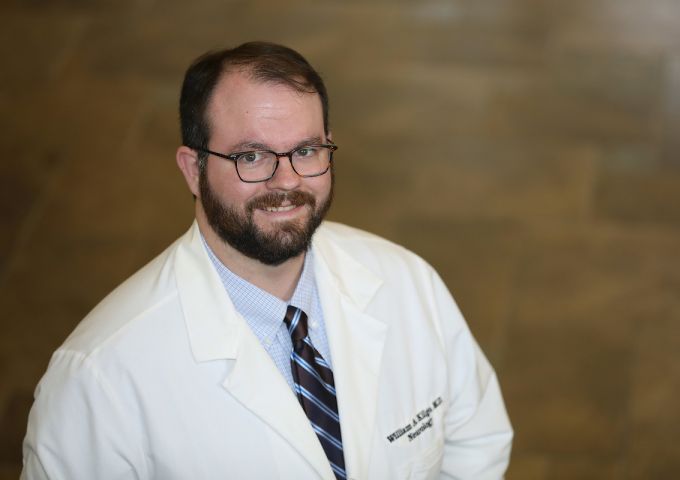
First-year medical students meet first patients in virtual clinic
The students will make recommendations based on medical, social and financial information and follow up throughout the academic year as if they were the patients’ primary care providers.
By Carol McPhail
On the first Monday of medical school, a team of first-year students are already meeting their first patient, a 29-year-old female specialist in the Alabama National Guard who’s at risk of developing diabetes and hypertension. The professor wants to know: How can she improve her health? He also asks: Will her insurance cover it?
Welcome to the Virtual Continuity Clinic, where first-year students at the University of South Alabama College of Medicine are assigned virtual patients as part of the Foundations of Human Health class. The students will make recommendations based on medical, social and financial information and follow up throughout the academic year as if they were the patients’ primary care providers.
“We wanted to start them out with a challenge,” explained Jeffrey Sosnowski, M.D., Ph.D., assistant dean for medical education. Sosnowski developed the virtual patient clinic with David Weber, Ph.D., associate professor in the department of physiology and cell biology. “This curriculum gives them a taste of what’s to come,” Sosnowski said.
The virtual clinic builds upon educational changes made in 2010, when the USA College of Medicine adopted an integrated organ systems-based approach for the first two years of medical school. Professors wanted to broaden the students’ education further, incorporate more active learning and equip them with the tools they need to treat the whole patient.
First-year medical student Jade Kantzler and her team considered the case of a 38-year-old man, an engineer who is married with three children and earns $120,000 a year. He has a family history of diabetes, hypertension and lung cancer. A smoker, he also eats mostly fast food and drinks beer every day.
Kantzler and her team were excited. “I thought this project was a great idea because we were given the opportunity to practice as real doctors,” she said.
Her team recommended nutritional counseling, exercise three to four times a week, support to quit smoking, health screenings and even low-cost day care for his children. “Teams were chosen to present their plans while visiting physicians commented on how to better present plans or pointed out faults,” said Kantzler, of Gadsden. “I have learned that each patient I’ll see will be different in their own way and that the best way to treat them is to take into consideration all of the factors that influence their health.”
Professors tested the concept of virtual patients last year and continue to add nuances. Weber, a certified health coach and personal trainer, developed a grading rubric for students incorporating exercise, nutrition, stress reduction, mental health and social support, and even the impact of military service.
There is no one right answer, the professors say, as long as the teams defend their recommendations effectively. “The teams bring a variety of approaches to the table,” Weber said.
This year, students are choosing health insurance plans for their virtual patients. They use the virtual patient’s budget and health history to select a plan that is affordable and meets the patient’s needs.
This concept is new for most first-year medical students, many of whom are young enough to be covered under their parents’ insurance. “It was eye-opening for them. That was probably the first time they had explored healthcare.gov,” Sosnowski said. “They’re learning what a premium is and what a deductible is.”
The Virtual Continuity Clinic can also incorporate health trends into the mix. One team developed a timeline showing the role of opioid pain medications over years and the impact that decisions by regulators and pharmaceutical companies have played in the national crisis.
“There are all sorts of different ways to go,” Sosnowski said. “It’s endless.”
For instance, second-year medical students were assigned to “see” other students’ patients in the virtual clinic – just as physicians see their colleagues’ patients in a true clinic.
The professors plan to weave the virtual clinic throughout medical curricula, perhaps into the third and fourth years when students are working in hospitals and clinics. “This is just the beginning,” Sosnowski said. “We’re hoping to continue to develop this over time.”




